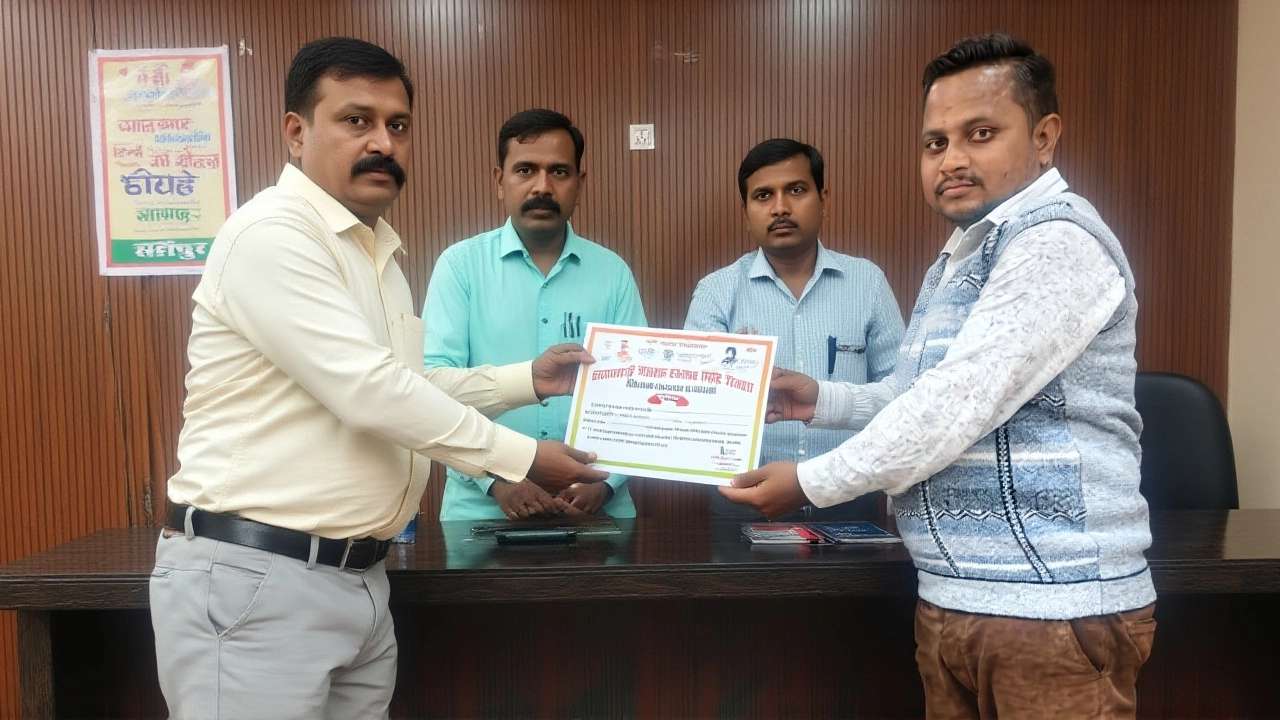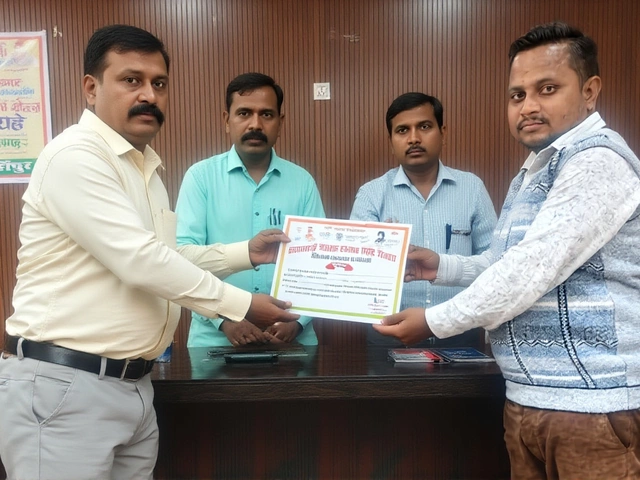At 2:00 PM on November 19, 2025, Narendra Modi stood under the warm Tamil Nadu sun in Coimbatore, pressing a button that triggered the largest single-day cash transfer to rural India in history: Rs 18,000 crore directly into the bank accounts of 9 crore farmers. The moment wasn’t just ceremonial—it was the 21st disbursement under the Pradhan Mantri Kisan Samman Nidhi (PM-Kisan) scheme, a program that has quietly reshaped rural economics since its launch in December 2018. This isn’t just welfare. It’s a financial lifeline that arrives like clockwork—every four months—turning abstract policy into tangible rupees in the hands of those who feed the nation.
How the PM-Kisan Machine Works
The PM-Kisan scheme doesn’t rely on middlemen. Every payment flows through the Public Financial Management System (PFMS), a government-backed digital backbone that connects farmer data to over 1.5 lakh bank branches. To get paid, farmers must pass mandatory e-KYC—linking their Aadhaar to bank accounts, verifying land records, and confirming their identity. It’s not perfect. Some farmers miss out because their names don’t match exactly on their Aadhaar and bank passbooks. Others, who inherited land after the February 1, 2019 cut-off, are excluded. And in households where multiple sons claim eligibility, payments stall until physical verification is done.On November 15, the official @pmkisanofficial Twitter account reminded farmers: "Please click the link and register now." That urgency wasn’t hype. By 4:12 PM IST on the 19th, the Indian Express confirmed the first transfers had hit accounts. By 6:52 PM, millions had received the Rs 2,000 credit—part of the Rs 6,000 annual payout divided into three installments.
Who Gets Left Behind?
The scheme targets landholding families, but it’s not open to everyone. Former and current constitutional officeholders earning over Rs 10 lakh annually are barred. So are retired civil servants with pensions above that threshold. Doctors, engineers, and lawyers making more than Rs 15 lakh a year? Excluded. Institutional landowners—corporate farms, agribusinesses—are also out. The logic? Target the smallholder, not the elite. But critics point out the gray areas: What about widows farming inherited land under their husband’s name? Or farmers who bought plots after 2019 to escape urban rent? The system doesn’t bend for those cases.According to the Ministry of Agriculture and Farmers Welfare, over 1.2 crore applications were flagged for verification issues in the last cycle. Many are resolved within weeks. But for farmers in remote Odisha or Jharkhand, waiting means delaying seed purchases or school fees. "It’s not that we don’t want to help," said a district officer in Madhya Pradesh. "It’s that the system can’t yet handle the complexity of rural land records. We’re digitizing the past, but the past is messy."
The Numbers That Matter
Since December 2018, the government has transferred over Rs 3.7 lakh crore to more than 11 crore farmer families. The 20th installment, released on August 2, 2025, from Varanasi, was larger—Rs 20,500 crore to 9.7 crore beneficiaries. Why the dip this time? Because the 21st installment was preceded by a special advance of Rs 170 crore to 8.5 lakh farmers in Jammu and Kashmir after monsoon floods in October. That advance was pulled from the 21st cycle’s allocation, explaining the lower total.Still, the scale is staggering. That’s roughly Rs 2,000 per farmer every four months—money that often goes toward diesel for pumps, fertilizer, or children’s textbooks. In states like Punjab and Andhra Pradesh, farmers report using the funds to repay microloans, reducing debt spirals. In Bihar and Uttar Pradesh, it’s become the baseline income for households where agriculture is the only livelihood.

What’s Next?
The next disbursement is expected between December 2025 and March 2026, following the scheme’s quarterly rhythm. But pressure is building for reform. The Ministry of Agriculture is testing a pilot in six states to allow mobile-based land record uploads using satellite imagery—bypassing the need for physical paperwork. If successful, it could reduce verification delays by 60%.Meanwhile, the PM-Kisan portal (pmkisan.gov.in) now offers a live payment tracker. Farmers can enter their Aadhaar or application number to see if funds are pending, credited, or rejected. The toll-free helpline—1800-11-5526—received over 2.3 million calls in the 72 hours after the November 19 disbursement. Most were simple: "Where’s my money?"
Why This Matters Beyond the Rupees
This isn’t just about cash. It’s about dignity. For the first time, millions of rural households have predictable, direct income—not tied to crop cycles, market prices, or middlemen. It’s a quiet revolution: a farmer in Telangana knows that on November 19, Rs 2,000 will arrive. That certainty lets them plan. It lets them send their daughter to college. It lets them avoid predatory lenders.And yet, the system remains brittle. A single mismatch in a name spelling can delay a payment for months. A bank branch without internet access can stall an entire village’s disbursement. The government’s answer? More tech. But tech alone won’t fix bureaucracy. What’s needed now isn’t just more money—it’s smarter systems, faster corrections, and compassion built into the code.
Frequently Asked Questions
How can a farmer check if they received the PM-Kisan installment?
Farmers can check their payment status on the official PM-Kisan portal (pmkisan.gov.in) by entering their Aadhaar number or application reference ID. The portal shows whether the payment is pending, credited, or rejected. If rejected, the reason—such as incomplete e-KYC or bank mismatch—is displayed. Customer support via the toll-free number 1800-11-5526 is available for assistance.
Why did some farmers receive less than Rs 2,000 in the 21st installment?
In rare cases, partial payments occur when a farmer’s bank account is linked to multiple Aadhaar numbers, or if land records show co-ownership with someone already receiving payments. The system automatically reduces the amount to avoid duplicate claims. Farmers can appeal through district-level committees, but processing takes 4–6 weeks. Most issues stem from outdated records, not fraud.
What happens if a farmer’s land was acquired after February 1, 2019?
The scheme excludes land acquired after February 1, 2019, to prevent new land purchases solely for eligibility. However, if the land was inherited or transferred due to marriage or death, the family can submit proof to the local revenue office. If verified, they may be added retroactively. Over 3.1 lakh such cases were processed between August and November 2025, with 78% approved.
Are tenant farmers eligible for PM-Kisan payments?
No. Only landholding farmer families—those registered as owners in state land records—are eligible. Tenant farmers, who lease land, are excluded unless they hold a legal title. This remains one of the biggest gaps in the scheme. Advocacy groups are pushing for inclusion, but the government argues verifying tenancy agreements nationwide would overwhelm the system.
When is the next PM-Kisan installment expected?
The next disbursement is scheduled between December 2025 and March 2026, following the scheme’s quarterly cycle. The exact date will be announced in late November 2025. Historically, payments are released in the first week of December, with funds typically credited within 48 hours of the official announcement.
How has the PM-Kisan scheme impacted rural poverty rates?
A 2024 study by the Indian Council for Research on International Economic Relations (ICRIER) found that PM-Kisan reduced rural poverty by 1.8 percentage points annually since 2019. Households receiving the full Rs 6,000 saw a 22% drop in high-interest borrowing and a 15% increase in school enrollment for children aged 10–16. The scheme’s impact is strongest in states like Odisha, Jharkhand, and Chhattisgarh, where agriculture is the primary livelihood.






